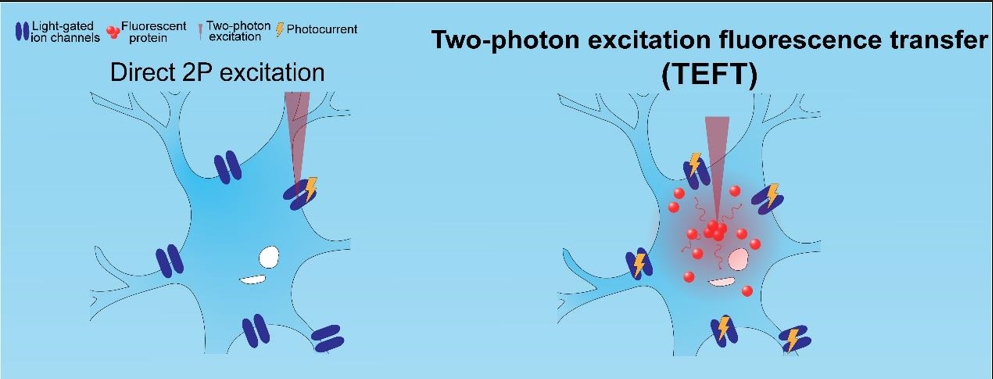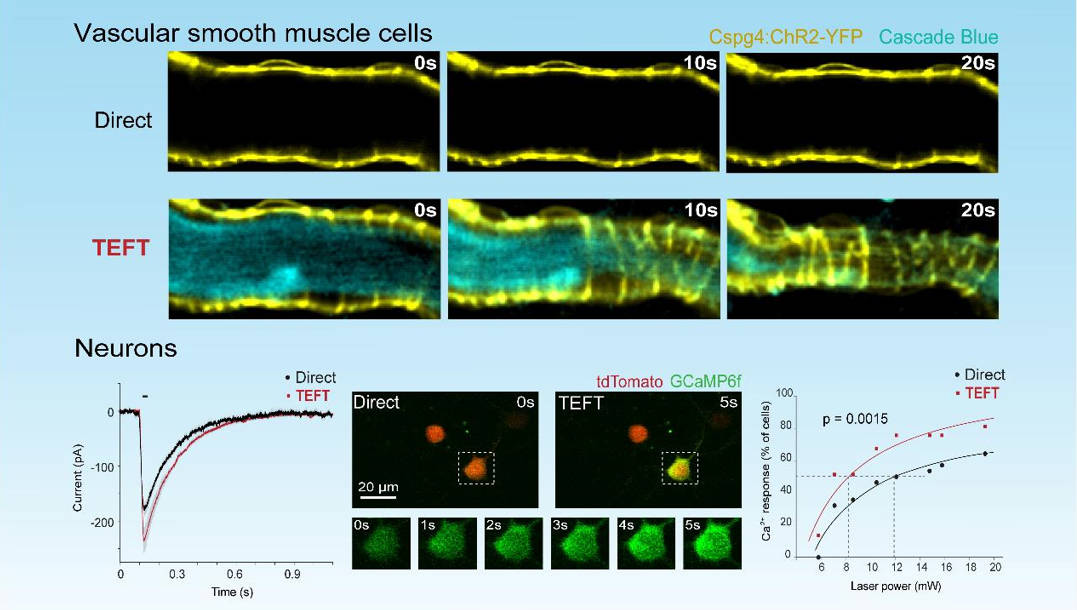Optogenetic manipulation with single-cell resolution can be achieved by two-photon excitation. However, this frequently requires relatively high laser powers. Here, we developed a novel strategy that can improve the efficiency of current two-photon stimulation technologies by positioning fluorescent proteins or small fluorescent molecules with high two-photon cross-sections in the vicinity of opsins. This generates a highly localized source of endogenous single-photon illumination that can be tailored to match the optimal opsin absorbance. Through neuronal and vascular stimulation in the live mouse brain, we demonstrate the utility of this technique to achieve efficient opsin stimulation, without loss of cellular resolution. We also provide a theoretical framework for understanding the potential advantages and constrains of this methodology, with directions for future improvements. Altogether, this fluorescence transfer illumination method opens new possibilities for experiments difficult to implement in the live brain such as all-optical neural interrogation and control of regional cerebral blood flow.


paper link: https://www.cell.com/iscience/fulltext/S2589-0042(23)01934-X